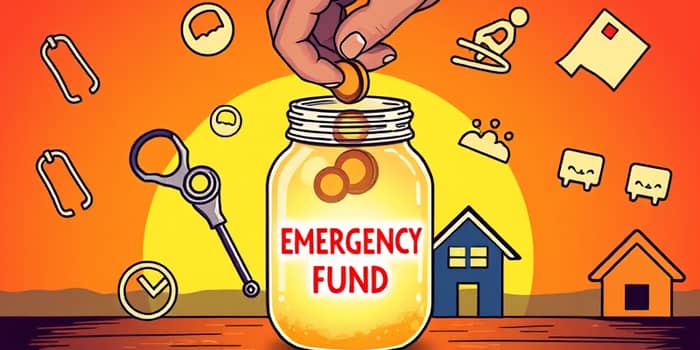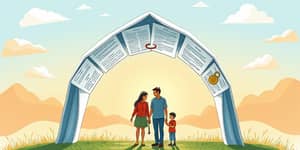Life can take unexpected turns at any moment—a major car repair, an urgent medical bill or sudden job loss can leave you scrambling for cash. Without a dedicated safety net, these financial shocks can quickly spiral into overwhelming debt and stress.
This comprehensive guide will show you how to build, maintain, and wisely use an emergency fund so you have the confidence and resources to face uncertainty head-on. By prioritizing this essential foundation, you’ll protect your long-term goals and preserve peace of mind.
Understanding Emergency Funds
An emergency fund is money set aside in a separate account for truly unplanned expenses. Its core purpose is to act as a robust financial buffer and safety net so you won’t need to rely on high-interest credit cards, loans, or retirement savings when life surprises you.
By having immediate access to cash, you can make thoughtful decisions—like finding the right mechanic or choosing the best medical treatment—instead of reacting under financial pressure.
Why Prioritize an Emergency Fund
Building an emergency fund delivers multiple benefits:
- Reduces anxiety and stress by providing stability.
- Prevents costly debt cycles from credit cards and payday loans.
- Gives you the flexibility to pursue career changes or education.
- Helps maintain focus on long-term goals rather than short-term crises.
Everyday Emergencies Your Fund Should Cover
Your emergency fund is designed for essential, urgent expenses that can’t wait:
- Unexpected medical expenses and bills
- Home or major appliance repairs
- Car repairs or breakdowns
- Sudden job loss or reduction in income
- Travel for family crises or funerals
Defining Your Target: How Much Is Enough?
Experts recommend saving three to six months’ worth of living expenses to weather most emergencies. Calculating your target involves adding up essential monthly costs—rent or mortgage, utilities, groceries, insurance, transportation and minimum debt payments—then multiplying by three to six.
Life changes—like having children, moving or changing jobs—should trigger an annual reassessment of your savings goal.
Where to Keep Your Emergency Fund
Select a high-yield savings account that is FDIC- or NCUA-insured, ensuring your funds remain secure and easily accessible. Keep it separate from your checking account to minimize temptation and maintain clear records of your available emergency balance.
While money markets and short-term CDs can offer higher rates, ensure any account you choose allows for immediate withdrawals without penalties.
Building Your Emergency Fund Step by Step
Establishing your cushion may feel daunting if you’re living paycheck to paycheck, but consistent progress is possible with a structured plan:
- Start with a small goal—save $500, then increase to $1,000.
- Track expenses and identify areas to cut back, redirecting savings to the fund.
- Set up automatic transfers from checking to savings each pay period.
- Apply windfalls—bonuses, tax refunds or gifts—to boost your balance.
- Celebrate milestones to maintain motivation and discipline.
When to Use and Rebuild Your Fund
Only tap your emergency fund for necessary, unexpected, urgent costs—true emergencies only. Avoid dipping in for wants, planned expenses, or routine bills. Every time you use the fund, prioritize rebuilding it immediately to preserve your safety net.
Common Pitfalls and How to Overcome Them
Many savers struggle with discipline, often tempted to use the fund for non-urgent needs. Establish mental rules—such as consulting an accountability partner—so you can avoid using for non-emergencies.
If initial setup feels too slow, tighten your budget further or temporarily reduce non-essential subscriptions. Remember, even small, consistent contributions accumulate over time.
Additional Benefits and Expert Insights
Beyond immediate security, an emergency fund empowers you to:
• Pursue big life decisions—starting a business, going back to school or relocating—without paralyzing financial fear.
• Maintain progress on retirement and investment goals, instead of diverting those funds in crisis.
A Federal Reserve survey found that nearly 40% of Americans would struggle to cover a $400 emergency, highlighting the urgent need for accessible reserves. Financial experts from NerdWallet, Forbes and major firms consistently advise making this fund a top priority before other investments.
Tools and Techniques for Tracking Progress
Leverage technology to stay on track:
- Use budgeting apps with visual charts to monitor balances.
- Enable notifications for every deposit and withdrawal.
- Set calendar reminders to review your target at least quarterly.
Automated workflows and clear visual feedback can transform the task of saving into a motivating journey.
Conclusion
Building an emergency fund is the cornerstone of sound financial planning. With a dedicated reserve held in a liquid, insured account, you’ll minimize stress, avoid high-interest debt, and maintain control during life’s uncertainties.
Prioritize this fund, follow the outlined steps, and review your target as circumstances evolve. Over time, you’ll gain not just monetary protection, but the priceless confidence to face whatever comes next.
References
- https://www.amerantbank.com/ofinterest/understanding-the-importance-of-an-emergency-fund/
- https://www.nerdwallet.com/banking/learn/emergency-fund-why-it-matters
- https://www.northshorebank.com/about-us/connecting-with-you/budgeting/pros-and-cons-of-having-an-emergency-fund
- https://dfi.wa.gov/financial-education/information/importance-having-emergency-savings-account
- https://investor.vanguard.com/investor-resources-education/emergency-fund
- https://www.consumerfinance.gov/an-essential-guide-to-building-an-emergency-fund/
- https://www.johnhancock.com/ideas-insights/why-do-i-need-an-emergency-fund.html
- https://www.1stunitedcu.org/more-for-you/financial-wellness/four-reasons-emergency-funds-are-important










